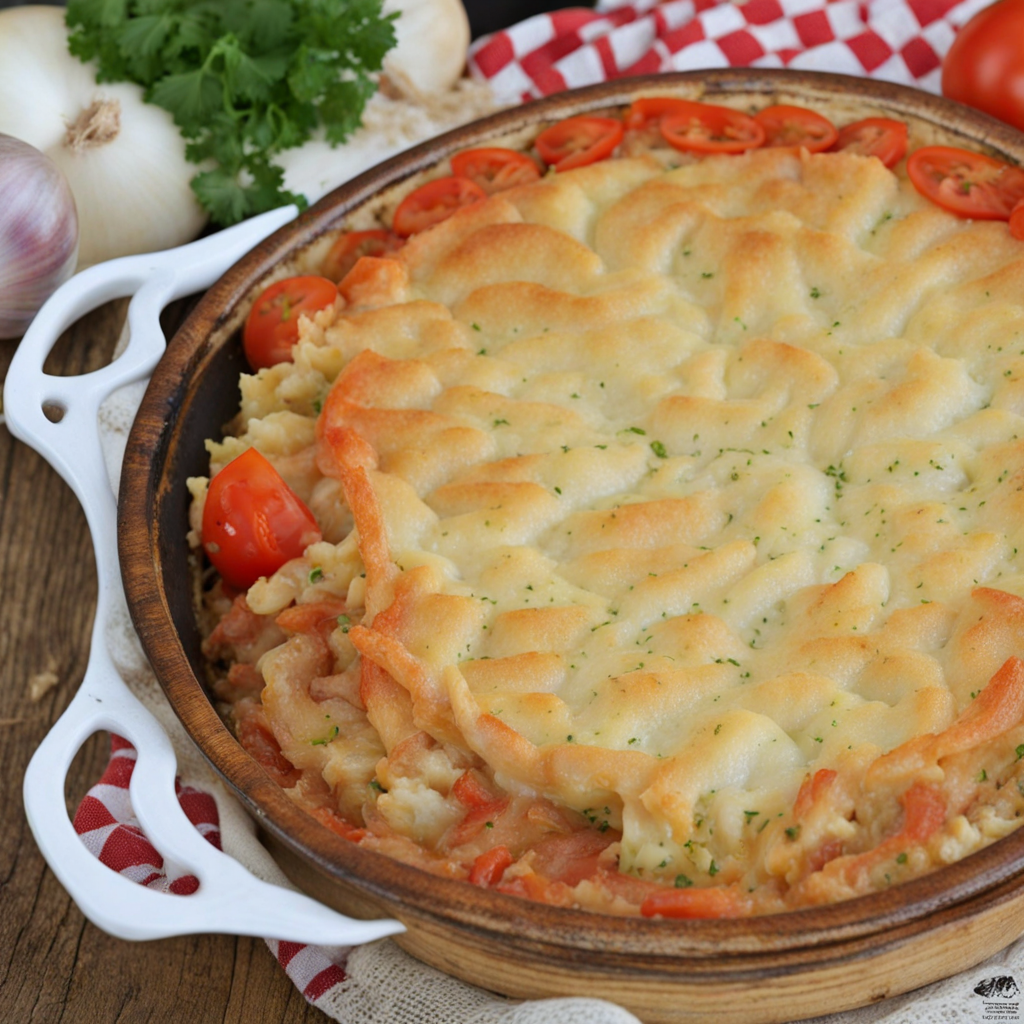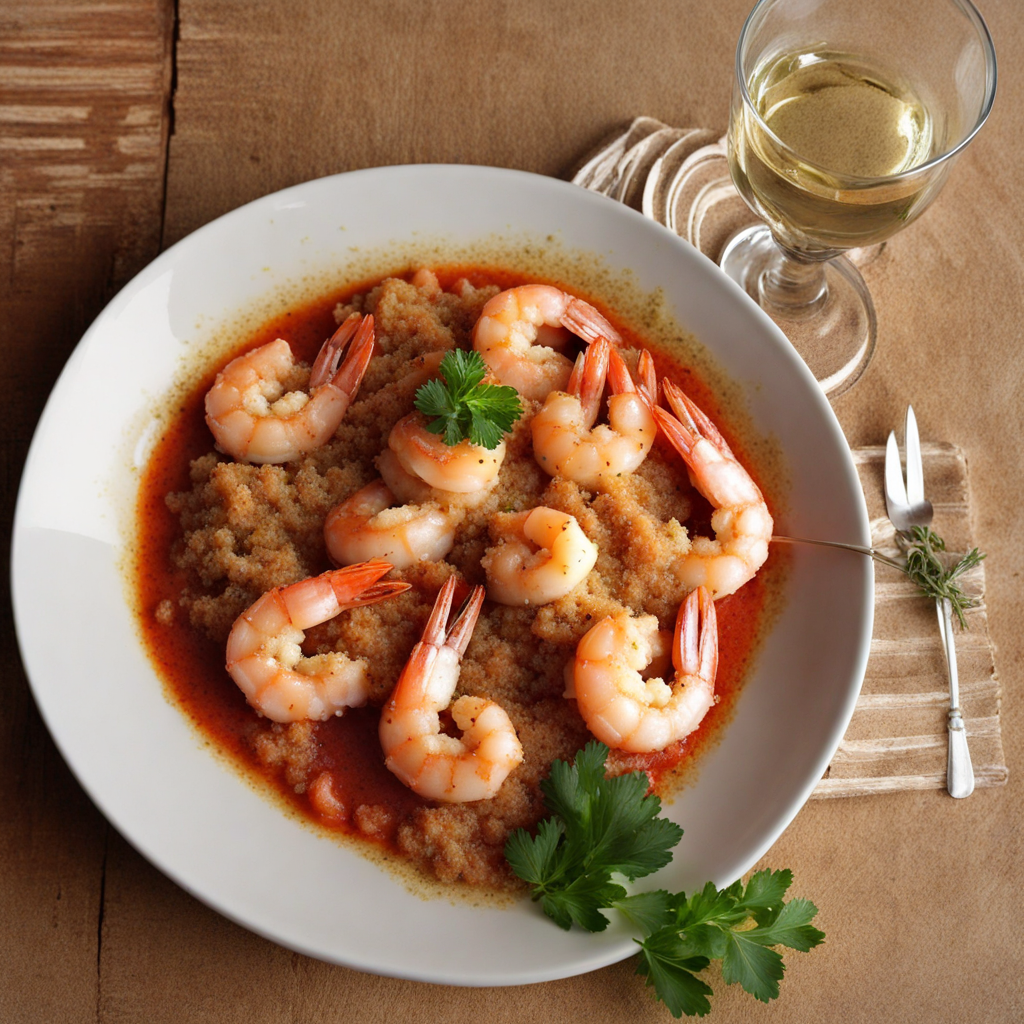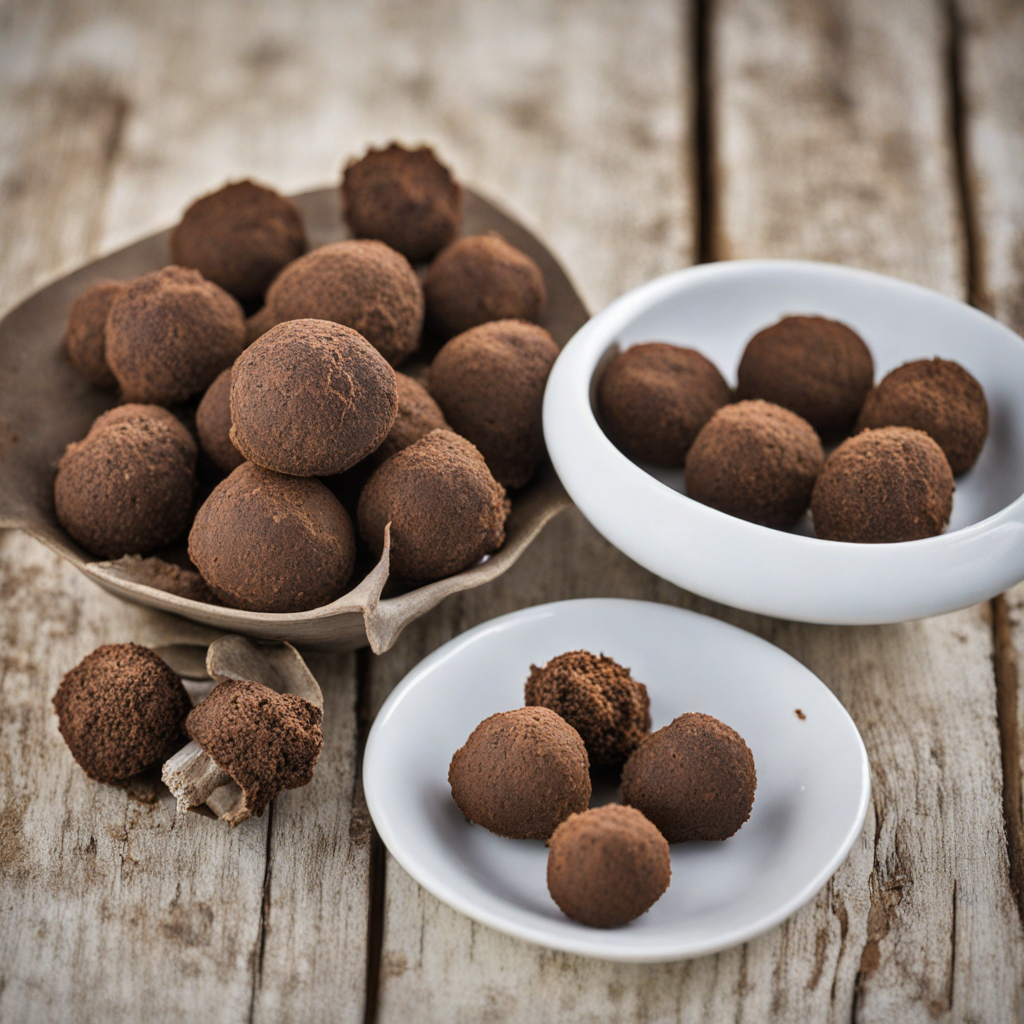Štrudla
Štrudla, a beloved delicacy from Croatia, is a delightful pastry that embodies the rich culinary heritage of the region. This traditional dish is often made with thin layers of dough that are rolled around a variety of sweet or savory fillings. The dough is typically stretched and rolled to achieve a delicate, flaky texture that creates an irresistible crunch when baked. The most popular version is the apple strudel, known as "jabuka štrudla," which features a luscious filling of grated apples, cinnamon, sugar, and sometimes raisins or nuts, all enveloped in the tender pastry. Beyond the classic apple filling, Štrudla can also be prepared with an array of other ingredients, showcasing the versatility of this dish. Variations may include cheese, poppy seeds, or cherries, each offering a unique flavor profile that caters to different palates. The balance of sweetness and acidity in the fillings, combined with the buttery, crisp crust, creates a harmonious bite that is both comforting and satisfying. It’s often enjoyed warm, dusted with powdered sugar, making it a delightful dessert or a sweet snack for any time of the day. Štrudla is not only a treat for the taste buds but also a cultural symbol, often prepared for family gatherings, holidays, and celebrations. The process of making Štrudla can be a communal activity, bringing friends and family together in the kitchen. As you savor each bite, you’ll find yourself immersed in the flavors of Croatia, experiencing a dish that has been cherished through generations. Whether indulging in a sweet version after a meal or savoring a savory slice with coffee, Štrudla offers a taste of Croatian tradition that is truly unforgettable.
How It Became This Dish
The History of Štrudla: A Culinary Journey Through Time Štrudla, known internationally as strudel, is a beloved pastry that has become a symbol of comfort in Croatian cuisine. Its origins, cultural significance, and development over time highlight not only the evolution of a dish but also the rich tapestry of influences that have shaped Croatian culinary traditions. #### Origins: A Crossroads of Cultures The story of štrudla begins in the heart of Central Europe, where various cultures and traditions intersected. Its roots can be traced back to the 16th century, specifically to the Austro-Hungarian Empire, which included parts of modern-day Austria, Hungary, and Croatia. The word "strudel" itself is derived from the German term "Strudel," meaning "whirlpool" or "eddy," which aptly describes the dish’s spiral shape. The earliest iterations of strudel were likely inspired by the layered pastries of the Ottoman Empire, which ruled over parts of Southeast Europe for centuries. The Ottoman influence on Balkan cuisine is profound, introducing techniques and ingredients that would later be embraced and adapted by local cooks. One of the most significant contributions was the use of thinly rolled dough, similar to the Turkish baklava pastry, which would become a hallmark of strudel. By the time the 18th century rolled around, strudel had firmly established itself as a staple of Central European cuisine. The Habsburg court helped elevate this humble dish to a gourmet level, celebrating it in lavish banquets and introducing it to the wider public. It was during this period that various fillings began to emerge, ranging from sweet fruit mixtures to savory combinations, allowing for a rich diversity of flavors. #### Cultural Significance In Croatia, štrudla is more than just a pastry; it is a cultural artifact that embodies the spirit of community and familial bonds. Traditionally, preparing štrudla was a communal affair, often involving multiple generations of a family. Mothers and grandmothers would teach younger generations the intricacies of making the dough, rolling it out until it was almost transparent, and filling it with ingredients such as apples, cheese, or poppy seeds. The preparation of štrudla is often tied to significant life events and celebrations. In Croatian households, it is commonly served during festive occasions, holidays, and family gatherings. For instance, apple štrudla, one of the most popular varieties, is often associated with the autumn harvest and is a staple during Thanksgiving and Christmas celebrations. Its presence at these gatherings serves to create a sense of nostalgia and continuity, connecting the past with the present. Moreover, štrudla has found its way into local festivals and culinary fairs, where local bakers and chefs showcase their variations. It has become a symbol of regional pride, with each locality boasting its own secret recipes and techniques, contributing to the ongoing evolution of this cherished dish. #### Development Over Time As Croatian society evolved, so too did štrudla. The 20th century brought about significant changes, particularly after World War II, when Croatia became part of the Socialist Federal Republic of Yugoslavia. During this period, culinary traditions were often homogenized, leading to a fusion of regional dishes and flavors. However, štrudla remained a constant, adapting to the changing times while retaining its core essence. The post-war era saw a renewed interest in traditional cuisine as people began to embrace their cultural heritage. Cookbooks began to emerge, documenting regional recipes and preserving the art of making štrudla. The rise of tourism in the latter half of the 20th century also played a crucial role in popularizing štrudla beyond Croatian borders. Visitors were drawn to its enticing aroma and delicate layers, and many sought the recipe to take home, further spreading its fame. In the 21st century, the culinary landscape in Croatia has witnessed a renaissance as chefs venture to reinterpret classic dishes. Modern variations of štrudla have emerged, incorporating contemporary ingredients and techniques while honoring traditional methods. For instance, fusion versions may include exotic fruits or spices, reflecting global culinary trends. Nevertheless, the classic apple and cheese fillings remain beloved staples, cherished for their simplicity and nostalgic connection to Croatian heritage. #### A Global Perspective As Croatian emigrants settled in various parts of the world, they carried their culinary traditions with them, and štrudla became a bridge connecting them to their homeland. In places like the United States, where Croatian communities have flourished, štrudla is often featured at cultural events and family gatherings, serving as a reminder of their roots. The dish has also garnered attention in international culinary circles, with chefs and food enthusiasts exploring its versatility. Contemporary adaptations have appeared in gourmet restaurants, showcasing the skill involved in making the perfect strudel while embracing modern sensibilities. Various food blogs and social media platforms have celebrated the beauty of this pastry, further elevating its status and inspiring home cooks to experiment with their own versions. #### Conclusion: The Enduring Legacy of Štrudla Štrudla is more than just a pastry; it is a testament to the rich history of culinary exchange and adaptation. Its journey from a simple dough rolled with fillings to a celebrated dish enjoyed worldwide exemplifies the resilience and creativity of Croatian culture. As it continues to evolve, štrudla remains a cherished symbol of home, family, and tradition. Whether enjoyed as a sweet dessert or a savory snack, štrudla holds a special place in the hearts of many, inviting people to gather around the table, share stories, and savor the flavors of a rich and diverse culinary heritage. As we look to the future, it is clear that štrudla will continue to be an integral part of Croatian cuisine, bridging generations and cultures with each delicious bite.
You may like
Discover local flavors from Croatia







